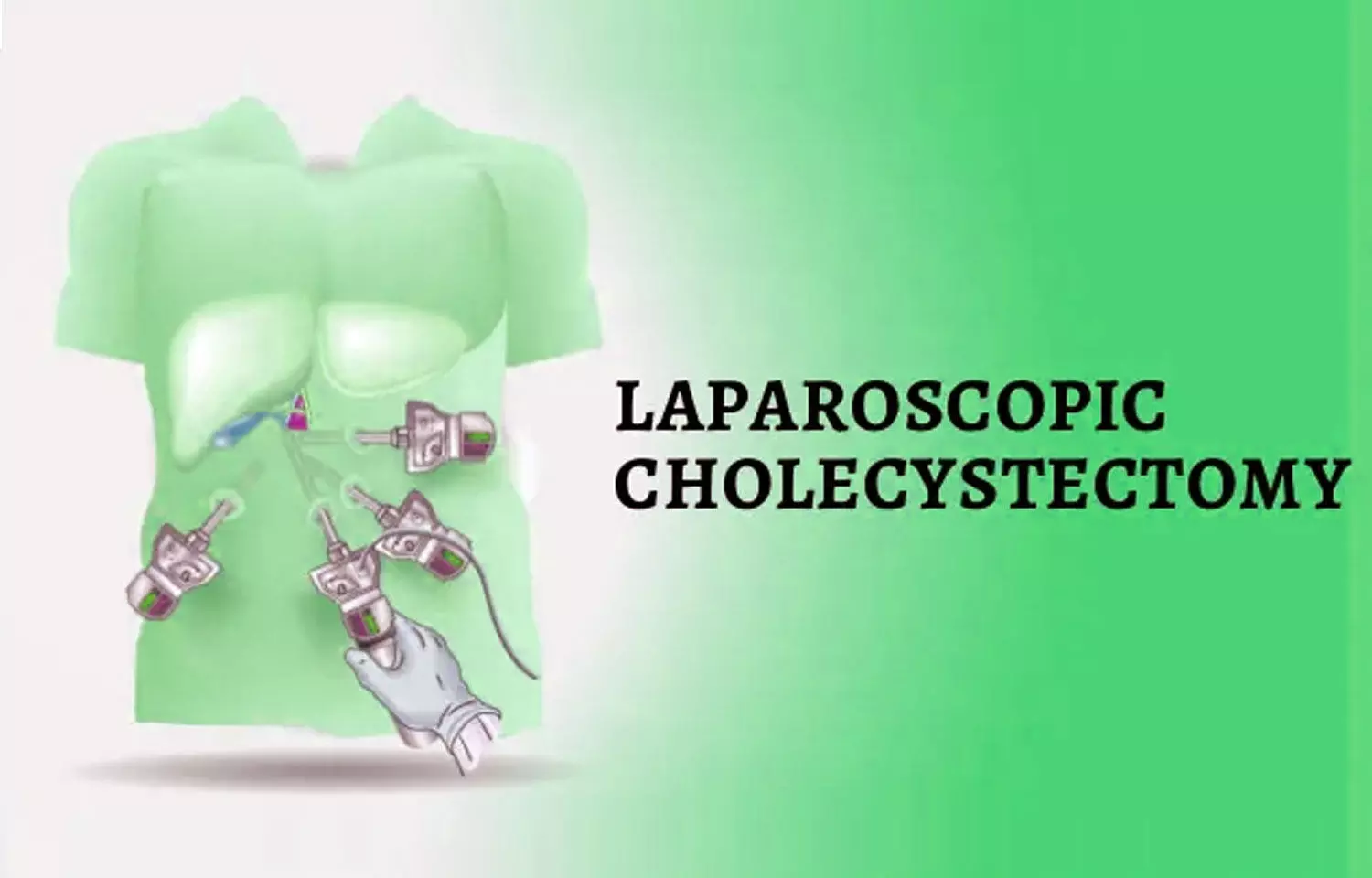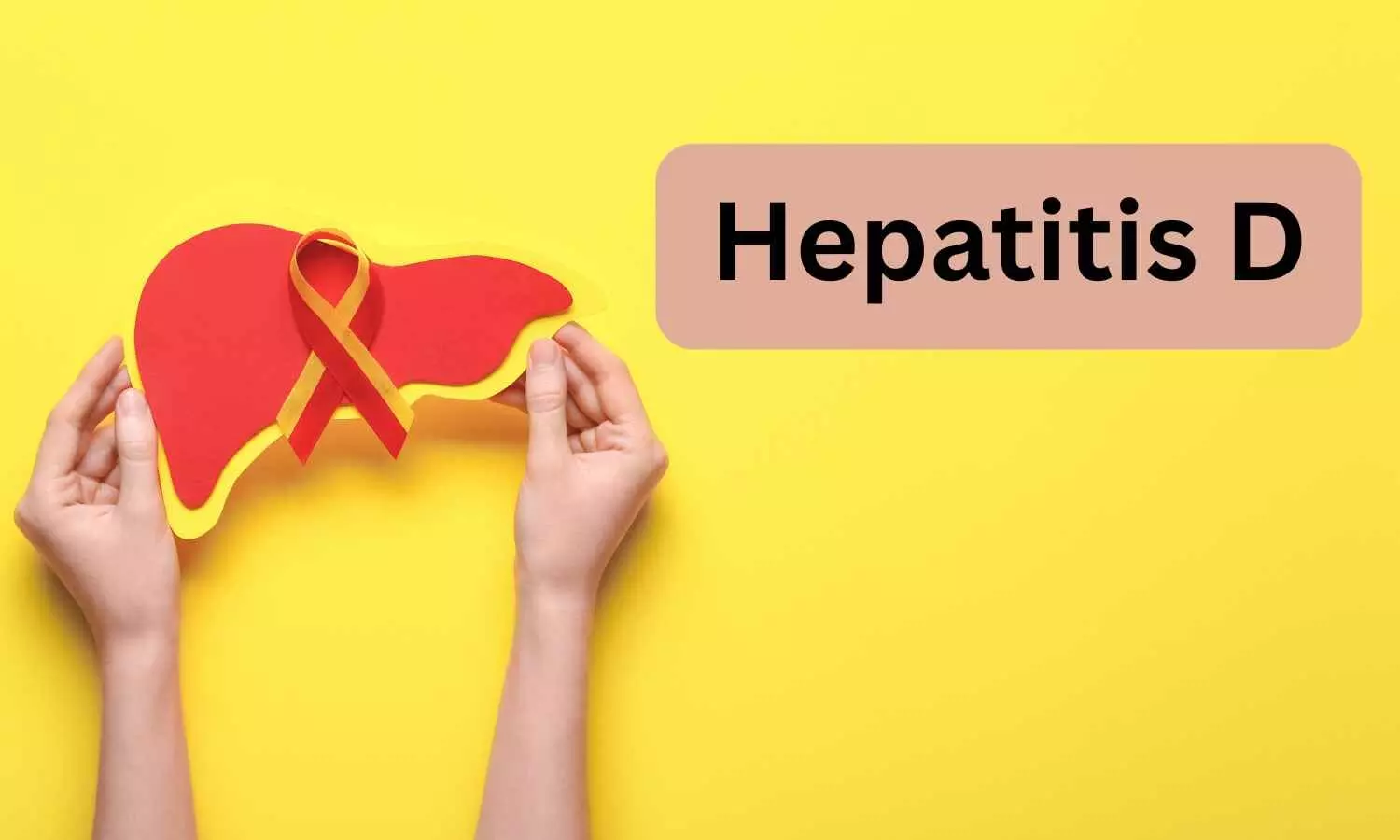Bacterial cellulose-based dressing offers rapid bleeding control for burn wound care
Powered by WPeMatico
Powered by WPeMatico

India: A recent study from India has revealed that kidney involvement is highly prevalent among children diagnosed with systemic lupus erythematosus (SLE), with nearly two-thirds developing lupus nephritis (LN) either at diagnosis or within five years. These findings are part of the first report from the Indian Pediatric Lupus Nephritis (pLN) Registry and were published in Clinical Rheumatology by Dr. Sanjukta Poddar and colleagues from the Institute of Child Health, Kolkata.
The Indian pLN Registry, which began in 2020, is the first prospective initiative of its kind in a low- and middle-income country (LMIC). It collects data from multiple centers across India to better understand the clinical characteristics, laboratory parameters, and renal biopsy findings in children (≤18 years) diagnosed with lupus and nephritis. The present report captures the initial clinical presentation of these children and highlights some stark patterns.
The following were the key findings of the study:
The researchers noted that AKI, often overlooked in earlier studies due to retrospective data limitations, was found to be far more common when assessed prospectively. Given its independent link with increased morbidity and mortality, early identification and management of AKI in pediatric lupus is critical.
The report highlights the urgent need for better awareness, early diagnosis, and robust follow-up in managing pediatric lupus nephritis, particularly in resource-constrained settings. As children enrolled in the registry continue to be followed up, researchers hope to gain deeper insights into treatment responses and long-term outcomes, which could ultimately help refine care protocols and improve prognosis for affected children in LMICs.
The authors concluded, “The study emphasizes the value of prospective data collection in understanding disease burden more accurately and shaping more effective, evidence-based strategies for managing pediatric lupus nephritis.”
Reference:
Poddar, S., Dasgupta, D., Pradhan, S. et al. Clinical presentation of children with lupus nephritis from a low- and middle-income country (LMIC): an initial report from the Indian pSLE Nephritis Registry. Clin Rheumatol (2025). https://doi.org/10.1007/s10067-025-07576-9
Powered by WPeMatico

China: A new study published in BMC Ophthalmology has identified key factors influencing the success of orthokeratology (Ortho-K) in slowing axial elongation among children with myopia. Researchers found that age, spherical equivalent refraction (SER), and parental high myopia significantly affect treatment outcomes. Additionally, maintaining proper lens decentration without visual disturbances and adhering to regular follow-ups were shown to enhance the efficacy of myopia control.
The retrospective analysis, conducted by Kai Wang and colleagues at the Institute of Medical Technology, Peking University Health Science Center, Beijing, reviewed 542 eyes from 300 myopic children fitted with Ortho-K lenses between January 2022 and December 2023. They evaluated Baseline ocular measurements, such as corneal parameters, anterior chamber depth, pupil size, and treatment zone characteristics. Researchers also incorporated genetic factors, parental myopia status, and lifestyle habits—including near-work duration, outdoor activity, diet, and follow-up compliance—collected through detailed questionnaires.
The findings revealed the following:
Researchers emphasized that the study’s strength lies in its comprehensive approach, integrating a wide range of ocular, genetic, and behavioral factors in a relatively large cohort. This holistic evaluation highlights the importance of combining precise clinical assessments with parental involvement and lifestyle management to optimize myopia control strategies.
Despite its robust design, the study acknowledged several limitations. Being retrospective, it relied partly on parental recall for lifestyle factors, which may have introduced memory bias. Approximately 10% of cases were excluded due to incomplete data or low-quality questionnaires, and the absence of a prospective design limits causal inference. Additionally, the complex etiology of myopia, influenced by environmental and behavioral factors, suggests that further research with prospective, multi-time-point data collection is necessary to validate these findings.
The authors concluded that understanding these predictive factors can help clinicians better tailor Ortho-K treatment plans. “Younger children, those with lower baseline myopia, and with both parents highly myopic require closer monitoring and possibly additional interventions to maximize treatment effectiveness,” they noted. Encouraging regular follow-ups and educating families on healthy visual habits were highlighted as essential steps to enhance myopia management and reduce trial-and-error in clinical practice.
By integrating personalized lens fitting, maintaining optimal decentration, and addressing genetic and lifestyle influences, the study suggests that orthokeratology can be a powerful tool in combating progressive myopia and its associated long-term visual complications in children.
Reference:
Deng, Y., Li, X., Zhao, M. et al. Critical factors to predict efficacy of orthokeratology in inhibiting axial elongation in myopic children. BMC Ophthalmol 25, 433 (2025). https://doi.org/10.1186/s12886-025-04265-8
Powered by WPeMatico

A post hoc study published in Mycoses has confirmed that efinaconazole 10% solution is both effective and safe for treating toenail onychomycosis in adults aged 65 and older. Despite age-related nail changes, the treatment showed comparable results in older adults and the general population, supporting its use in elderly patients. The study was conducted by Shari R. and colleagues.
Onychomycosis, a fungal toenail infection, is particularly common in the elderly. Thicker nails and slower growth, both associated with aging, as well as comorbid medical conditions, contribute to making the infection more difficult to treat. Oral antifungals, while effective, carry risks including liver injury and drug–drug interactions that are particularly problematic in this age category. Topical treatments such as efinaconazole 10% solution, which can be applied locally to the nail with minimal absorption into the body, provide a safer option. Hitherto, there have been sparse data on their efficacy particularly among elderly populations.
This analysis employed data from two multicenter, randomized, double-blind, vehicle-controlled phase 3 trials (NCT01008033 and NCT01007708), involving once-daily use of efinaconazole 10% solution or vehicle for 48 weeks with a post-treatment follow-up period of 4 weeks. The analysis was applied to a subgroup of patients 65 years of age or older, with mild to moderate toenail onychomycosis, consisting of 162 patients who received efinaconazole and 56 patients treated with vehicle. The main outcome was 52-week complete cure, which was taken as 0% clinical involvement of the target toenail and mycologic cure (negative potassium hydroxide [KOH] microscopy and fungal culture). Secondary outcomes were mycologic cure and complete or near complete cure (≤5% nail involvement + mycologic cure). Safety was evaluated through treatment-emergent adverse events (TEAEs).
Results
• At week 52, 13.6% of the subjects between the ages of 65 and 71 years receiving efinaconazole had a complete cure, whereas only 3.6% in the vehicle group a statistically significant difference (p < 0.05).
• Complete or near-complete cure rate was significantly greater in the efinaconazole group as well at 19.1%, compared with 5.4% with vehicle (p = 0.01).
• Most significantly, 59.2% of the patients had a mycologic cure on efinaconazole, as compared to a mere 12.5% in the placebo group (p < 0.001).
• TEAEs due to treatment were low with efinaconazole at 6.0%, which was comparable to the rates experienced by the total study population.
• These results highlight the safety and efficacy of efinaconazole even among elderly patients, who often present with more recalcitrant nail conditions.
Efinaconazole 10% solution was both safe and effective in the treatment of toenail onychomycosis among adults aged 65 years and older. With notable improvement in cure rates and minimal adverse effects, efinaconazole is a worthwhile treatment option for older adults who are not candidates for systemic antifungal treatment.
Reference:
Lipner, S. R., Gupta, A. K., Joseph, W. S., Elewski, B., Guenin, E., & Vlahovic, T. C. (2025). Efficacy and safety of efinaconazole 10% topical solution for treatment of onychomycosis in older adults: A post hoc analysis of two phase 3 randomised trials. Mycoses, 68(5), e70069. https://doi.org/10.1111/myc.70069
Powered by WPeMatico

A new study published in the journal of BMC Psychology revealed that reformer pilates significantly reduces pain intensity, fear of movement, and fatigue in patients with chronic musculoskeletal pain. The practice also promotes active living and improves both mental and physical health, with some effects reaching clinical significance.
Chronic pain is often defined as persistent or recurring pain that lasts more than 3 months. According to data from a number of studies, international treatment guidelines for the management of musculoskeletal pain recommend resistance exercise training and flexibility exercises at least twice a week in order to preserve functional status, encourage lifetime physical activity, and enhance overall quality of life.
This trial sought to determine how Reformer Pilates affects the degree of pain, coping mechanisms, pain beliefs, fear of movement, exhaustion, and sleep quality in young adults with persistent neck and low back pain.
A total of 54 women between the ages of 30 and 50 were randomized into 2 groups. A 6-week exercise regimen consisting of 45 minutes twice a week was given to the Reformer Pilates (RP) group, whereas no exercise regimen was given to the control group (CG). The following outcomes were assessed both before and after the interventions: Pittsburg Sleep Quality Index, Tampa Kinesiophobia Scale, FACIT Fatigue Scale, Pain Coping Scale, Pain Beliefs Scale, and Brief Pain Questionnaire.
At baseline, the groups were all the same. With small to large effect sizes in pain parameters (p <0.05; Cohen’s d = 0.17–1.45), big effect sizes in dread of movement, moderate effect sizes in tiredness, and medium effect sizes in sleep quality (p <0.05; Cohen’s d = 0.43–0.86), statistical differences were detected in favor of RP. Only the passive methods sub-headings of the Pain Coping Scale and the pain beliefs organic sub-heading of the Pain Beliefs Scale showed a statistically significant difference between the groups (p > 0.05).
Overall, these findings indicate that Reformer Pilates workouts assist individuals with chronic musculoskeletal pain manage their pain by fostering body-mind unification and lowering pain perception. The current study broadens the focus by assessing the neurophysiological and cognitive impacts of Reformer Pilates, especially in connection to pain beliefs and coping mechanisms, whereas earlier research has mostly concentrated on the physical advantages of Pilates.
Source:
Şahan, N., Uluğ, N., & Özeren, A. (2025). Effects of reformer pilates on pain, psychological factors, and sleep in chronic musculoskeletal pain: a randomized controlled trial. BMC Psychology, 13(1), 836. https://doi.org/10.1186/s40359-025-03207-9
Powered by WPeMatico

A new study published in the journal of Fertility and Sterility showed that women with polycystic ovary syndrome (PCOS) at midlife are more prone to unfavorable eating behaviors. Therefore Weight management counseling should be sensitive and holistic, addressing psychological distress and eventually targeted support can help reduce disordered eating patterns in this population.
Adults with at least 2 of the following symptoms; clinical or biochemical oligomenorrhea (OA), hyperandrogenism (HA), polycystic ovarian morphology (PCOM), or increased antimüllerian hormone (AMH) levels, are diagnosed with PCOS based on the updated Rotterdam criteria. Despite variations in body weight among PCOS phenotypes, obese women are more likely than non-PCOS women to gain weight starting in childhood. Consequently, this study was set to examine the domains of eating behavior (uncontrolled, emotional, and cognitive restraint eating) in midlife women with polycystic ovarian syndrome (PCOS) who exhibited various PCOS symptoms and those who did not.
This prospective cohort study with domains of eating behavior were evaluated at 46 years of age. Variables gathered at the ages of 31 and 46 were used to assess eating behavior predictors. Using the modified Rotterdam criteria, women who were diagnosed with PCOS (n = 251) at age 31 were compared to those who did not meet any PCOS criteria (n = 935). Classic A+B-phenotype women (hyperandrogenism and oligomenorrhea, with or without elevated antimüllerian hormone, n = 60), C-phenotype women (hyperandrogenism and elevated antimüllerian hormone, n = 84), and D-phenotype women (oligomenorrhea and elevated antimüllerian hormone, n = 86) were included in the PCOS population.
At age 46, women with PCOS showed no change in cognitive restraint, but they did score higher on emotional and uncontrolled eating than those without PCOS. While uncontrolled eating ratings in the C-phenotype were greater than those in the D-phenotype and women without PCOS, emotional and uncontrolled eating scores were higher in the A+B-phenotype when compared to women without PCOS.
While a history of weight loss attempts was a predictor of uncontrolled eating, the impression of being overweight was an independent predictor of emotional eating among women with PCOS at the age of 46. A major risk factor for women with PCOS who scored in the highest quartile of emotional and uncontrolled eating at age 46 was having more psychological distress at age 31. Overall, middle aged women with PCOS had a strong propensity for unhealthy eating habits.
Reference:
Pesonen, E., Nurkkala, M., Ollila, M.-M., Hurskainen, E., Morin-Papunen, L. C., Jämsä, T., Korpelainen, R., Niemelä, M., & Piltonen, T. T. (2024). Women with polycystic ovary syndrome are at risk of emotional and uncontrolled eating at midlife: a population-based cohort study. Fertility and Sterility. https://doi.org/10.1016/j.fertnstert.2024.09.042
Powered by WPeMatico

Total knee arthroplasty is a commonly performed procedure with postoperative complications including blood loss, pain, and hematoma formation. The role of intra-articular drainage in reducing these complications remains controversial.
Alessandro Smimmo et al conducted a study to evaluate the effects of intra-articular drainage on hemoglobin levels, pain, hematoma formation, and the need for blood transfusion in patients undergoing knee replacement.
A prospective study was conducted on 60 patients divided into two groups: Drainage (D) and No Drainage (ND). Hemoglobin levels, pain scores, ultrasound evaluation of intra-articular hematoma, and transfusion rates were recorded on the first, third, and fifth postoperative days. The estimated blood loss was calculated using the Meunier formula. Pain was evaluated using the Visual Analog Scale, while hematoma size was measured using ultrasound.
Key findings of the study were:
• The postoperative hemoglobin drop was significantly higher in the D group (p = 0.0027), with a mean estimated blood loss of 1366 mL in the D group compared to 957 mL in the ND group.
• Four patients in the D group required blood transfusions, while none in the ND group did (p = 0.0003).
• Pain scores were lower in the D group on the first postoperative day (p = 0.0001), but no significant differences were observed on the third and fifth days.
• Ultrasound showed a larger hematoma in the ND group on the first postoperative day (p = 0.02), but no significant difference was found by the fifth day.
The authors concluded that – “The use of drainage in TKA is associated with increased blood loss and transfusion rates without providing long term clinical benefits. While it may offer temporary pain relief and reduce early hematoma formation, its routine application should be reconsidered given the potential for increased postoperative anemia and patient discomfort, along with the lack of sustained pain reduction. Surgeons should carefully weigh its short-term benefits against its risks, particularly in patients with pre-existing anemia or those at risk for significant blood loss.”
Further reading:
Clinic and Ultrasound Evaluation of Suction Drainage in Total Knee Arthroplasty Procedure: A Multicentric Prospective Trial Alessandro Smimmo et al Indian Journal of Orthopaedics https://doi.org/10.1007/s43465-025-01501-7
Powered by WPeMatico

Japan: A large nationwide retrospective cohort study published in Respiratory Medicine has found that ampicillin-sulbactam may offer better outcomes than third-generation cephalosporins, such as ceftriaxone and cefotaxime, in the treatment of aspiration pneumonia. Conducted by Jumpei Taniguchi and colleagues from the Department of Clinical Epidemiology and Health Economics, School of Public Health, The University of Tokyo, the study assessed real-world data to compare the effectiveness of these commonly used antibiotics.
Using Japan’s Diagnosis Procedure Combination (DPC) inpatient database, researchers analyzed 548,972 patients diagnosed with aspiration pneumonia between July 2010 and March 2022. Of these, 424,446 received ampicillin-sulbactam, while 124,526 were treated with third-generation cephalosporins. Within the cephalosporin group, 97.7% received ceftriaxone and 2.3% cefotaxime. The mean treatment duration was 8.5 days for the ampicillin-sulbactam group and 7.9 days for those treated with cephalosporins.
The analysis revealed the following findings:
The findings suggest that ampicillin-sulbactam could be a more effective option for managing aspiration pneumonia, especially in reducing hospital mortality and preventing C. difficile infections, a major concern in hospitalized patients. The authors emphasized that these results support the importance of individualized antibiotic selection, taking into account the clinical context and potential risk factors for complications.
However, the study also acknowledged several limitations. Detailed clinical information, such as aspiration history, laboratory data, imaging findings, and microbiological cultures, was unavailable, which may have introduced heterogeneity in the patient population. The database also did not include long-term outcomes after hospital discharge. Additionally, the reasons for the initial choice of antibiotic therapy were not captured, making it difficult to fully understand prescribing patterns.
To ensure robustness, the researchers conducted multiple sensitivity analyses, including restricting the sample to patients requiring oxygen therapy, mechanical ventilation, or those aged 65 and older. These analyses consistently supported the main findings, reinforcing the observed benefit of ampicillin-sulbactam over third-generation cephalosporins.
“The study highlights the need for prospective trials with standardized diagnostic criteria and microbiological confirmation to validate these findings further. Until then, the evidence supports considering ampicillin-sulbactam as a first-line option for aspiration pneumonia, with antibiotic therapy tailored to patient-specific clinical factors to optimize outcomes,” the authors concluded.
Reference:
Taniguchi, J., Aso, S., Matsui, H., Fushimi, K., & Yasunaga, H. (2025). Ampicillin-sulbactam versus third-generation cephalosporins in aspiration Pneumonia: A nationwide retrospective cohort study. Respiratory Medicine, 247, 108276. https://doi.org/10.1016/j.rmed.2025.108276
Powered by WPeMatico

Researchers have found in a new study that Laparoscopic cholecystectomy (LC) is a safe and practical procedure for pregnant women, associated with minimal intraoperative and postoperative complications. The study was published in Cureus journal by VK Singhal and fellow researchers. A retrospective observational study in UAE hospital has reaffirmed the feasibility and benefits of LC in pregnancy, and it supports the increasing role of LC as the preferred treatment of symptomatic gallstones during pregnancy. The surgery demonstrated low complication rates of both surgical and obstetric complications, and this strengthens its safety profile and clinical utility in pregnant patients.
Gallbladder disease, such as cholelithiasis and cholecystitis, is not uncommon in pregnancy because hormonal changes influence bile composition and gallbladder motility. Traditionally, surgery in pregnancy has been managed cautiously with an eye on maternal and fetal risks. With advancements in minimally invasive surgery and perioperative care, the use of laparoscopic cholecystectomy in pregnancy has increased.
This retrospective observational study examined medical records of 56 pregnant women between 18 and 42 years old who had laparoscopic cholecystectomy for gallstones at Prime Hospital from January 2015 to December 2023. The inclusion criteria included those with acute or chronic cholecystitis, biliary colic, or undergoing immediate postpartum surgery. Non-surgical cases and those with incomplete data were excluded. Diagnoses were confirmed by clinical assessment and imaging, and all operations adhered to rigorous intraoperative protocols intended to reduce the risk of preterm delivery. Statistical analysis was conducted using SPSS (IBM Corp., Armonk, NY).
Key Findings
The mean age of the patients was 32.5 years, and the mean body mass index (BMI) was 28.4 kg/m². The mean gestational age at surgery was 22.7 weeks. The majority of the patients (34, 60.7%) were multiparous. Diabetes mellitus and hypertension were seen in 12 (21.4%) and 8 (14.3%) women, respectively.
The most frequent indications for surgery were symptomatic cholelithiasis in 30 patients (53.6%) and cholecystitis in 20 patients (35.7%). Intraoperative complications were exceptional, with a slight amount of bleeding in 3 cases (5.4%), and conversion to open surgery was required in only 2 cases (3.6%). The most frequent complication was postoperative pain in 40 patients (71.4%).
Obstetric complications were quite rare in general. Four patients (7.1%) had preterm labor, and 3 (5.4%) had fetal distress. Despite all these complications, neonatal status was outstanding, with high-quality APGAR scores and zero fetal deaths, which indicates LC did not affect fetal well-being if due caution was exercised.
The results of this study strongly attest to the safety and feasibility of laparoscopic cholecystectomy in pregnancy. These findings highlight LC as a safe and effective surgical method for the treatment of gallbladder disease in pregnant women, especially in the second trimester.
Reference:
Singhal V, Alaswad F, Senofer N, et al. (March 03, 2025) The Outcome of Laparoscopic Cholecystectomy in Pregnant Women . Cureus 17(3): e80005. DOI 10.7759/cureus.80005
Powered by WPeMatico

The International Agency for Research on Cancer (IARC) has classified hepatitis D as a human carcinogen, especially when co-infected with HBV, increasing liver cancer risk by 2 to 6 times. While WHO reports progress in vaccination and national plans, testing and treatment remain alarmingly low-only 13% of HBV and 36% of HCV cases are diagnosed. WHO calls for urgent expansion of screening and treatment efforts to eliminate viral hepatitis and reduce liver cancer-related deaths.
As we mark World Hepatitis Day, WHO calls on governments and partners to urgently accelerate efforts to eliminate viral hepatitis as a public health threat and reduce liver cancer deaths.
“Every 30 seconds, someone dies from a hepatitis-related severe liver disease or liver cancer. Yet we have the tools to stop hepatitis,” said Dr Tedros Adhanom Ghebreyesus, WHO Director-General.
Viral hepatitis – types A, B, C, D, and E – are major causes of acute liver infection. Among these only hepatitis B, C, and D can lead to chronic infections that significantly increase the risk of cirrhosis, liver failure, or liver cancer. Yet most people with hepatitis don’t know they’re infected. Types B, C, and D affect over 300 million people globally and cause more than 1.3 million deaths each year, mainly from liver cirrhosis and cancer.
The International Agency for Research on Cancer (IARC) recently classified hepatitis D as carcinogenic to humans, just like hepatitis B and C. Hepatitis D, which only affects individuals infected with the hepatitis B, is associated with a two- to six-fold higher risk of liver cancer compared to hepatitis B alone. This reclassification marks a critical step in global efforts to raise awareness, improve screening, and expand access to new treatments for hepatitis D.
“WHO has published guidelines on testing and diagnosis of Hepatitis B and D in 2024, and is actively following the clinical outcomes from innovative treatments for hepatitis D,” said Dr Meg Doherty, incoming Director of Science for Health at WHO.
Treatment with oral medicine can cure hepatitis C within 2 to 3 months and effectively suppress hepatitis B with life-long therapy. Treatment options for hepatitis D are evolving. However, the full benefit of reducing liver cirrhosis and cancer deaths can only be realized through urgent action to scale up and integrate hepatitis services – including vaccination, testing, harm reduction, and treatment – into national health systems.
Encouragingly, the majority of low- and middle-income countries (LMICs) have strategic plans on hepatitis in place and progress in national hepatitis responses is increasing:
• in 2025, the number of countries reporting national hepatitis action plans increased from 59 to 123;
• as of 2025, 129 countries have adopted policies for hepatitis B testing among pregnant women, up from 106 reported in 2024; and
• 147 countries have introduced the hepatitis B birth dose vaccination, an increase from 138 in 2022.
However, critical gaps remain in service coverage and outcomes, as stated in the 2024 Global Hepatitis Report:
• testing and treatment coverage remain critically low; only 13% of people with hepatitis B and 36% with hepatitis C had been diagnosed by 2022;
• treatment rates were even lower – 3% for hepatitis B and 20% for hepatitis C – well below the 2025 targets of 60% diagnosed and 50% treated; and
• integration of hepatitis services remains uneven: 80 countries have incorporated hepatitis services into primary health care; 128 into HIV programmes and just 27 have integrated hepatitis C services into harm reduction centres.
The next challenge will be to scale up the implementation of prevention, testing and treatment coverage. Achieving WHO’s 2030 targets could save 2.8 million lives and prevent 9.8 million new infections. With declining donor support, countries must prioritize domestic investment, integrated services, better data, affordable medicines, and ending stigma.
To mark World Hepatitis Day, WHO is partnering with Rotary International and the World Hepatitis Alliance to strengthen global and local advocacy. This year’s campaign “Hepatitis: Let’s break it down” demands action to confront the rising toll of liver cancer linked to chronic hepatitis infections. It also calls for decisive steps to dismantle persistent barriers – from stigma to funding gaps – that continue to slow progress in prevention, testing, and treatment.
Through a joint webinar and coordinated outreach, the partnership underscores the vital role of civil society and community leadership, alongside governments, in sustaining momentum and accelerating progress toward hepatitis elimination.
Powered by WPeMatico
